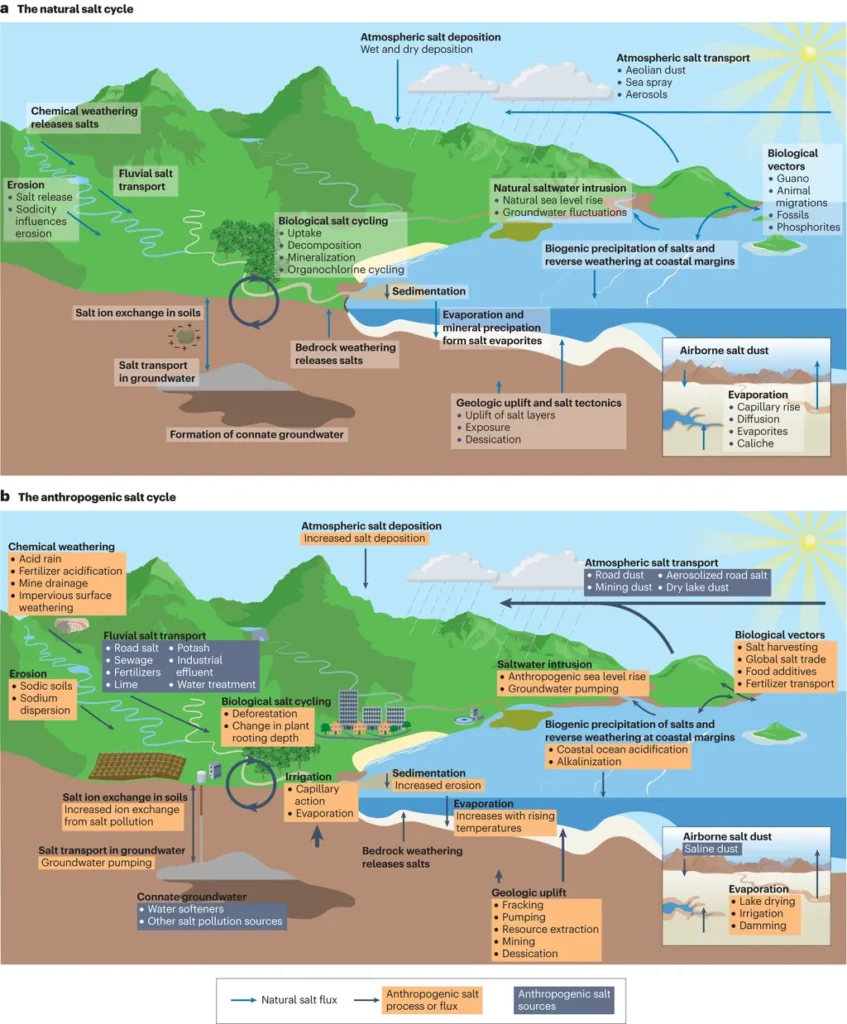In the arid landscapes of Northwest China, where water is a precious commodity, scientists are unraveling the intricate dance between water cycles and soil salinization. A recent study led by G. Meng from the College of Geography and Environmental Science at Northwest Normal University has shed light on the changing patterns of soil salinity in the Shiyang River basin, offering crucial insights for agricultural and ecological management.
The Shiyang River basin, a vital water source for the region, has been under the microscope for two decades. Meng and his team analyzed remote sensing and observational data from 2002 to 2022, revealing that while the overall salinization area has remained stable, the intensity of salinization is on the rise. “The northern hills and the oasis–desert transition zone are hotspots for severe salinization,” Meng explained. “In contrast, the central corridor plain and the southern Qilian Mountain regions are less affected.”
The study pinpoints human activities as the primary drivers of these changes. Water conservancy projects, agricultural irrigation, and ecological water inputs have significantly altered the natural water cycle. “Groundwater evaporation near reservoirs, agricultural irrigation evaporation, and downstream ecological water input evaporation are the main culprits,” Meng noted. This finding underscores the urgent need for sustainable water management practices.
The implications for the energy sector are profound. As water scarcity and soil salinization intensify, the agricultural sector faces mounting challenges. “Rational utilization and management of water resources hold tremendous potential in mitigating soil salinization,” Meng emphasized. This research could guide the development of more efficient irrigation technologies and water management strategies, ultimately benefiting both the agricultural and energy sectors.
The study, published in the journal ‘Hydrology and Earth System Sciences’ (translated as ‘水文和地球系统科学’), provides a roadmap for future research and policy decisions. By understanding the intricate interplay between water cycles and soil salinization, scientists and policymakers can work together to develop sustainable solutions for arid regions. As the world grapples with the impacts of climate change, this research offers a glimmer of hope for a more resilient future.
In the words of Meng, “Our findings highlight the critical role of human activities in shaping the water cycle and soil salinization patterns. By adopting sustainable practices, we can mitigate these effects and ensure the long-term viability of our ecosystems.” This research not only advances our scientific understanding but also paves the way for innovative solutions that can benefit both the environment and the economy.

